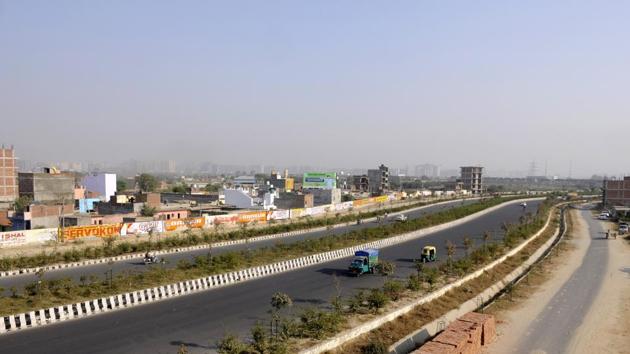Budget 2017: Highways sector likely to see only marginal rise in fund allocation
Highway sector’s budgetary allocation for 2017-18 fiscal is likely to be increased only marginally even as the Narendra Modi government has set an ambitious target of building almost 40km of roads per day. Government’s road-construction target was 20 km per day during UPA-II.
New Delhi

Highway sector’s budgetary allocation for 2017-18 fiscal is likely to be increased only marginally even as the Narendra Modi government has set an ambitious target of building almost 40km of roads per day. Government’s road-construction target was 20 km per day during UPA-II.
Sources said the highways ministry is likely to get Rs 58,000 crore, up from Rs 57, 976 crore it got in 2016-17. It had sought Rs 90,000 crore (approximately).
The marginal increase means the ministry will have to run a tight ship in the new fiscal, officials said.
This comes at a time when the ministry has unveiled an expansion programme of constructing 20,000 kilometres of national highways over the next three years. This includes the Bharat Mala project that envisages developing 6000 km roads along coastal and border areas, Char Dham project connecting four pilgrimage spots including Badrinath and Kedarnath and Sethu Bharatam involving building 350 bridges and rail over bridges in two years.
Highways ministry, however, maintains the not-so-generous allocation will not prove a stumbling block for the proposed projects as of now. “The finance ministry has allowed us to raise approximately Rs 59,000 crore from the market. This along with the budgetary allocation will see us through in the new fiscal,” said a ministry official.
But ministry officials caution if the present allocation trend continues in the next couple of years, it can hit the highway-expansion programmes. “If the government wants the highways infrastructure to be a catalyst for economic progress, it will have to continue the current level of investment in the next 2-3 years,” said Rohit Kumar Singh, member (finance), National Highways Authority of India.
The Modi government, like the previous NDA government under Atal Behari Vajpayee, has given top priority to the sector that had hit a rough patch since 2007.
The government realises that road construction is vital for creating jobs and raising incomes, infrastructure experts said. According to credit rating and research firm Crisil, the construction sector was the most labour-dependent among all non-agricultural sectors, requiring more than 12 people to produce R10 lakh of real output.
Infrastructure experts admit the sector has probably got one of the biggest boosts since 1998 when the then NDA government launched the National Highways Development Project, the largest government initiative to date to expand and upgrade the capacity of the India’s shambolic highway network.
Between 2014-15 and 2016-17, the overall allocation to the highways sector has increased by 73 % -- from Rs 1.3 lakh crore to Rs 2.25 lakh crore.
“The one sector that will outperform is highways. The progress in the last two-and-a-half years is laudable. But the ministry has to be careful otherwise it might get affected by the ‘high expectation’ syndrome. Apart from a quantum jump in terms of project allocation, the quality too needs to improve,” said Vinayak Chatterjee, chairman of infrastructure consulting firm Feedback Ventures.
Chatterjee says the ground conditions are right for a higher allocation. But he concedes there are tough challenges that the government will have to address if the current pace of development has to continue. “These range from land acquisition issues, stressed balance sheet of highway developers and banks, laden with NPAs, that are reluctant to lend,” he said.
In the last two years, the government has taken a slew of policy initiatives to raise revenue and lure back the private sector to invest in highways sector. With the appetite for PPP (public private partnership) projects going down, the highways ministry decided to first move to the EPC (engineering procurement contract) model where the government funds the entire project.
It also introduced a new model called “hybrid annuity” where the government gives 40 % of the construction cost while the developer invests the remaining 60 %. The new model will not result in reduced equity investments by developers, but will also reduce initial capital outflow for NHAI. Besides, the government also finalised the blueprint to auction completed public funded road projects to domestic and international players for operation and maintenance for a 15-20 year period.




